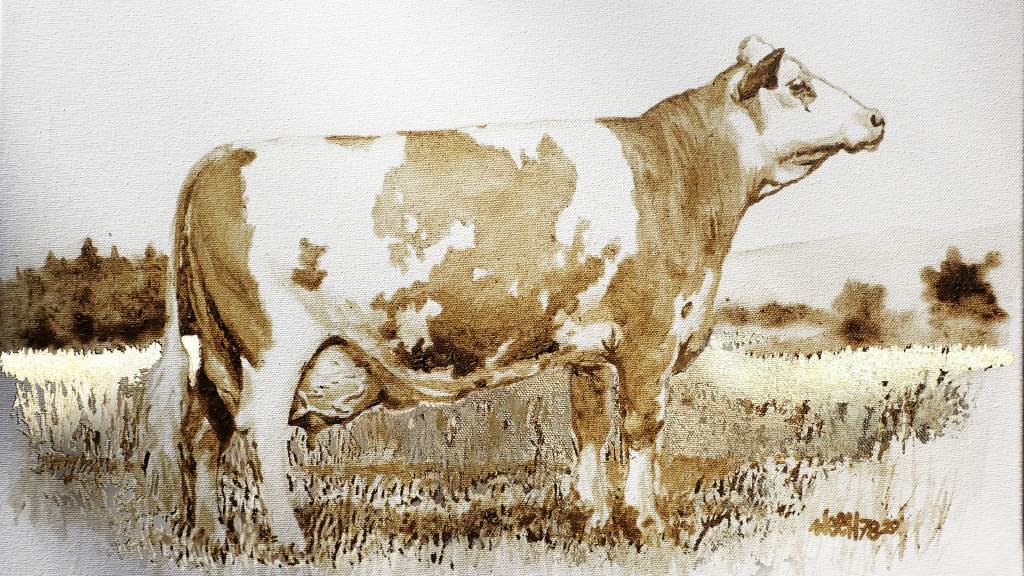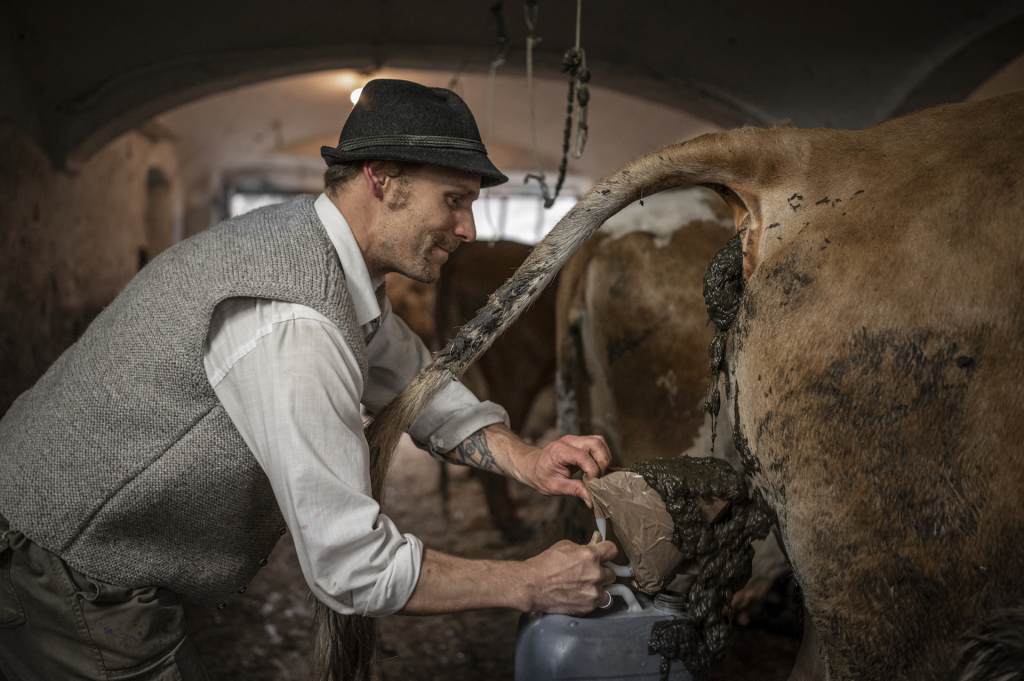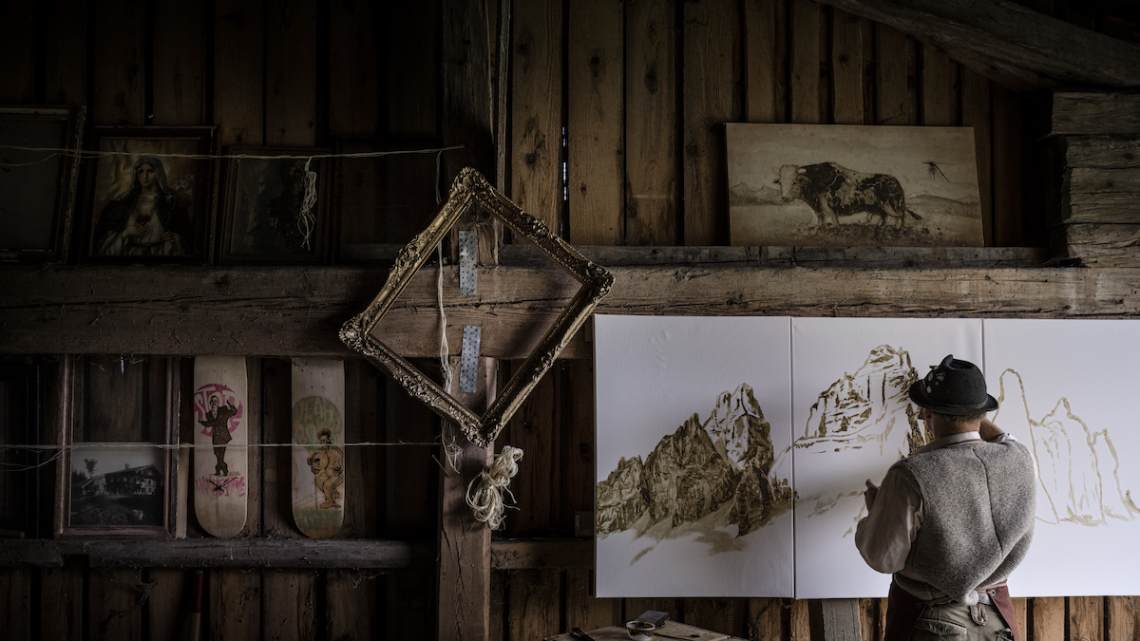German artist Werner Härtl creates intricate paintings celebrating Bavaria’s rural heritage while using a surprising medium: cow dung!
Poop Portrait
Despite the strange “paint,” Werner’s monochromatic artworks resemble sepia photographs, rich in detail. He first happened upon the idea of using cow dung as a medium while working as a farmhand.

One of Werner’s cow poop paintings. Courtesy Werner Härtle and Peter von Felbert www.felbert.de
After collecting and bringing home a container of liquid cow dung, he experimented with using it on various surfaces, including watercolor paper, canvases, metal, wood, and plastic. Soon, he started crafting incredible artwork portraying some of Germany’s most beautiful pastoral and agricultural landscapes.
A Chat with Werner
When Ripley’s Believe It or Not! reached out to Werner for his feature in our latest book, Escape the Ordinary, we couldn’t pass up the chance to ask him some questions.
Ripley’s: Of course, we must ask — Do your paintings smell like cow manure?
Werner: When it is wet, the “paint” is a bit funky. But when it’s completely dry, it doesn’t smell anymore.
Ripley’s: What steps do you take to turn the fresh “material” into paint?
Werner: Well, I fetch the cows’ droppings with a canister as soon as they lift their tails. Around two bowel movements deliver enough for half a year of creativity. While painting, I use water to dilute the dung and achieve different shades. I start scribbling using very dry, gentle brushstrokes. Then, I use watered-down dung for light shades. Finally, I use dung with no water mixed in for the dark shades.

Werner collecting his “paint” straight from the source. Courtesy Werner Härtle and Peter von Felbert www.felbert.de
Ripley’s: What do you wish more people knew about your art?
Werner: Humor is a big part of my work, but working with dung has a serious purpose. I want people to rethink our view on the environment: what we rely on, which resources we claim for everyday life. Are rural landscapes — including nature, culture, traditions — just scenery to look at, simply a matter of aesthetics? People tend to think a pleasant life should be all clean, stylish, entertaining, and convenient. But without the “dirt” everything grows out from, without working in sweat, without knowledge gained from failure, none of the above would be enjoyable.
A Lasting Impact
One incredible aspect of Werner’s work is that it is all sustainable and doesn’t have a negative impact on the environment. In speaking with Bavaria Insider, Werner elaborated stating, “But on closer inspection, cow dung is one thing above all: sustainable! It can be reused. By painting with it, I want to emphasize the idea of the cycle. I want to make people think and sensitize them to appreciate their environment more.”
Escape the Ordinary With Ripley’s Latest Book!
Find this story and more inside Ripley’s all-new book! Escape the Ordinary‘s 256 pages spark curiosity, challenge perception, celebrate differences, and curate a sense of wonder for the weird world around us! Available now on Amazon and at most major retailers.











Comment Your Reaction